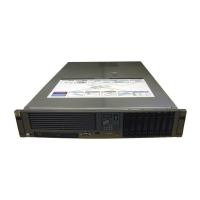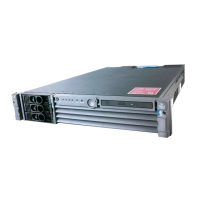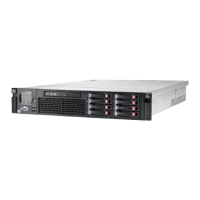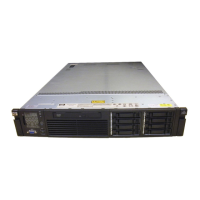• Backplane board
• Core I/O cards
The server supports up to 16 SAS hard drives, each with LEDs that indicate drive activity and
device status, and an LED used to locate each drive. Additionally, there is a set of slot availability
LEDs positioned in the middle of the disk drive bays on the front of the chassis. The illuminated
LEDs indicate connection and power from a SAS controller to the bank of SAS disk drive slots.
The disk drives plug directly into the SAS backplane board. The server ships standard with two
SAS backplane boards and one SAS core I/O card. Two cables connect from the SAS backplane
board to the SAS core I/O card located in PCI/PCI-X slot 1. An optional second SAS core I/O
card is available. Service the SAS backplane board and SAS core I/O card from the top of the
chassis.
IMPORTANT: The number and type of SAS core I/O cards determines the SAS configuration.
The SAS configuration affects the location of the LAN core I/O card. In a single SAS core I/O
card configuration, the secondary set of SAS cables connect to the secondary SAS backplane, but
are routed through the server I/O backplane area.
Table 6 lists the available SAS configurations.
Table 6 SAS Configurations
LAN Core I/O Card LocationSAS Core I/O Card LocationSAS Core I/O Cards
Slot 2Slot 11
Slot 10Slots 1 and 22
Slot 2Slots 1 and 32
Slot 2Slot 31
Slot 2Slots 3 and 42
Firmware
Firmware consists of many individually linked binary images that are bound together by a single
framework at run time. Internally, the firmware employs a software database called a device tree
to represent the structure of the hardware platform and to provide a means of associating software
elements with hardware functionality.
The firmware incorporates the following main interfaces:
Processor Abstraction Layer (PAL) PAL provides a seamless firmware abstraction between the
processor and system software and platform firmware.
System Abstraction Layer (SAL) SAL provides a uniform firmware interface, and initializes
and configures the platform.
Extensible Firmware Interface (EFI) EFI provides an interface between the operating system and
the platform firmware. EFI uses data tables that contain
platform-related information, and boot and run-time service
calls that are available to the operating system and its loader
to provide a standard environment for booting.
Advanced Configuration and Power
Interface (ACPI)
ACPI provides a standard environment for configuring and
managing server systems. ACPI moves system power
configuration and management from the system firmware
to the operating system, and abstracts the interface between
the platform hardware and the operating system software.
This enables each to evolve independently of the other.
Firmware 27
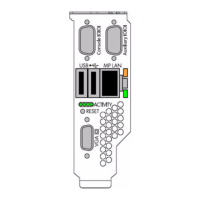
